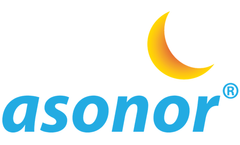Diabetes Non Obese Diabetic Articles & Analysis: Older
14 articles found
Do you have fragmented sleep all through the night? Do you wake up oftentimes at night, struggling to breathe? Is your partner tired of your heavy snoring and often reminds you to see a doctor? Well, if your chronic, frequent snoring is associated with sleep apnea, there are a number of factors and issues to be aware of. Basically, it’s a matter of cause and effect with sleep apnea ...
Cellular metabolism is the general term for the ordered series of chemical reactions that occur within cells to sustain life. These reactive processes allow organisms to grow and reproduce, maintain their structure, and respond to the external environment. Metabolism is usually divided into two categories: catabolism, which breaks down large molecules for energy (e.g., cellular respiration), ...
Diabetes, specifically Type 1 and Type 2 Diabetes Mellitus, remains one of the most commonly encountered metabolic diseases worldwide. ...
More than 95 percent of people with diabetes have type 2 diabetes (formerly known as non-insulin-dependent diabetes or adult-onset diabetes), which is characterized by the body's abnormal use of insulin that affects the body's use of glucose for energy, mainly due to obesity, physical inactivity ...
HFpEF patients are likely to have a high prevalence of cardiovascular and non-cardiovascular comorbidities, such as obesity, metabolic syndrome, diabetes mellitus type 2, salt-sensitive hypertension, atrial fibrillation (AF), chronic obstructive pulmonary disease, anaemia, and renal dysfunction.[6.7,8] As life expectancy and comorbidity rates ...
PiT1, initially identified as retrovirus receptor, is a transmembrane protein of the sodium-phosphate co-transporter family. PiT1 also has independent functions of its role as a phosphate transporter, notably on cell proliferation, adhesion or apoptosis. These observations suggest that interactions of PiT1 with other molecular partners may impact not only the homeostasis of inorganic phosphate, ...
Biolingus explores the development of a sublingual dual incretin inhibitor. BioLingus will position these products in the “epidemic” markets of obesity and type II diabetes : More than 400 MM people suffer from diabetes today. The global type 2 diabetes market is expected to grow to $58.7 billion by 2025, with an annual growth rate of 6.5%, according to research and consulting ...
Diabetes affects more than 400 million people worldwide and is a huge public health burden. Obesity is a major risk factor for diabetes and leads to insulin resistance that often precedes diabetes. Currently, genome-wide association studies (GWAS) have identified more than 80 diabetes susceptibility loci, and an increasing number of mutations and variants have been identified in monogenic forms ...
The increasing incidence of peripheral artery disease (PAD) is occurring globally as populations age and rates of diabetes, obesity, and renal disease increase.1-3 Although most of these patients have no symptoms, when the disease progresses to its most advanced form, chronic limb-threatening ischemia (CLTI), there is a significant risk for limb loss. Despite the fact that our revascularization ...
The importance of a good night’s rest can’t be overstated. There is a reason why depriving someone of sleep is a form of torture. Humans need regular periods of quality sleep to recharge, process the day’s experiences, file away memories and follow a normal circadian rhythm to regulate the body’s functions. The amount of sleep we need varies with each person and is ...
When you look to the year ahead, what do you see? Ensia recently invited eight global thought leaders to share their thoughts. In this interview Jonathan Patz, director of the Global Health Institute at the University of Wisconsin-Madison, responds to three questions: What will be the biggest challenge to address or opportunity to grasp in your field in 2017? Why? And what should we be doing ...
ByEnsia
Not all patients are candidates for AVF and many of the studies that highlighted the advantages of autologous access discounted and/or did not acknowledge the unacceptable rate of early failure and fistula non-maturation.6 The FFBI inadvertently exposed the disadvantages of autologous access and the related cascade of unintended consequences from early AVF failure or prolonged ...
Obesity is associated with higher prevalence of type2 diabetes and hypertension. Objectives were determining prevalence of obesity, type2 diabetes and hypertension in a rural village. This cross sectional study included 1,000 male and female ≥ 20 years. Blood pressure, anthropometry, fasting and 2 hr post-prandial glucose were determined. Results showed 29.7% overweight and 45.6% obese. Visceral ...
We examined the effect of X-irradiation (0, 0.25, 0.5 or 1.0 Gy) on the onset of the type I diabetes (insulin dependent diabetes mellitus) in non-obese diabetic (NOD) mice. ...













